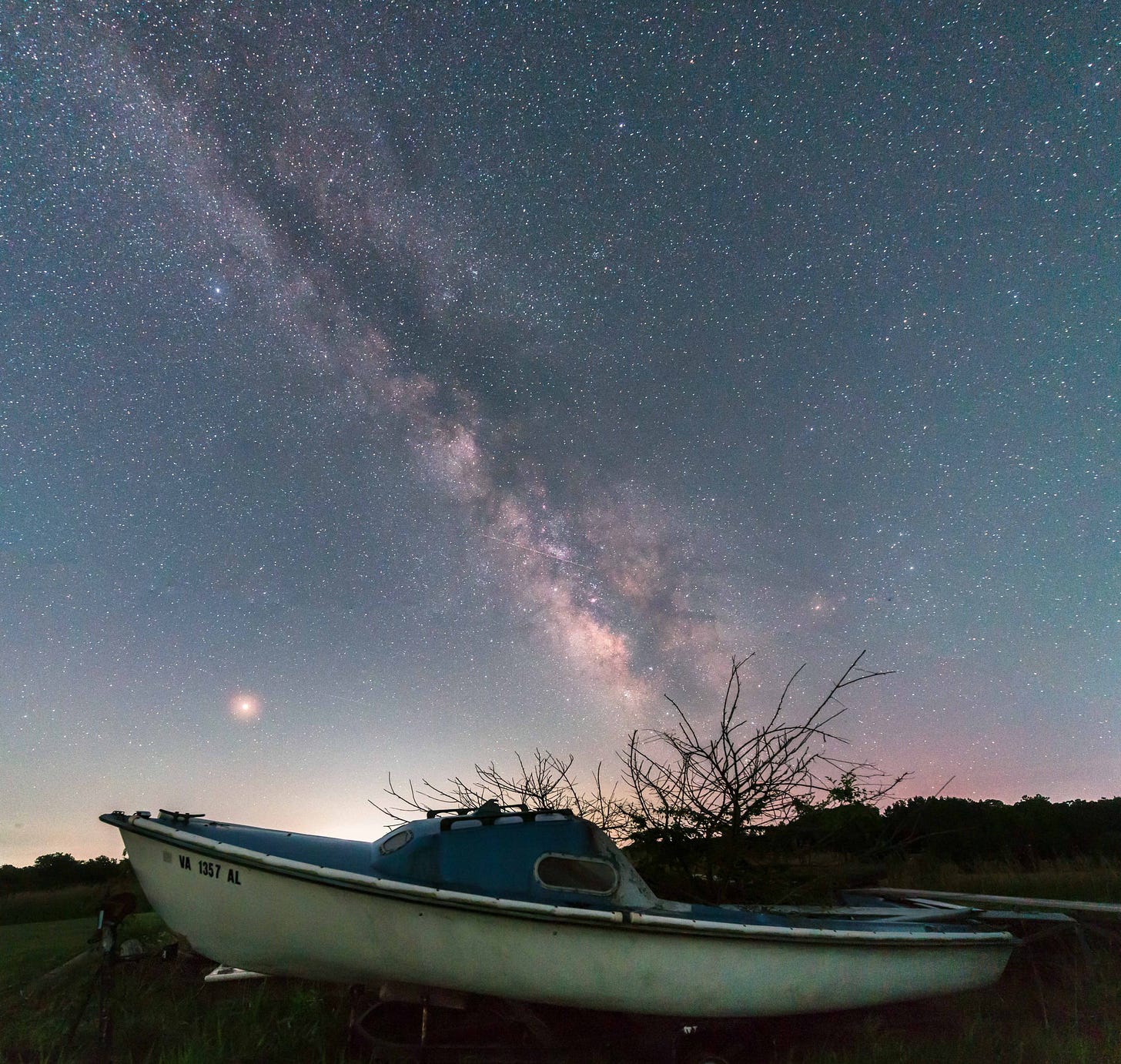The Summer Milky Way
The More You Look, The More You See
“Judged by the eye alone, the Milky Way is one of the most delicately beautiful phenomena in the entire realm of nature - a shimmer of silvery gauze stretched across the sky; but studied in the light of its revelations, it is the most stupendous object presented to human ken.”
- Garrett P. Serviss in Curiosities of the Sky (1909).
If you’re seeking starlight, the band of the northern Milky Way offers a good place to start. Away from city lights on a July or August evening, its luminous band emerges slowly in the growing darkness and stretches from the southwestern horizon to the northeast and up to the zenith. City dwellers who see the Milky Way for the first time often mistake it for terrestrial clouds. When they’re told its true nature, that it’s a band of a hundred billion stars etched with inky clouds of interstellar dust they fall silent and consider that perhaps spending a little more time stargazing might be worth the effort.
Many articles in the pages of Seeking Starlight will be devoted to exploring specific deep-sky sights along the Milky Way, larger structures such as dark nebulae and star clouds, as well as the structure of the galaxy as a whole. The Milky Way is our home galaxy so it makes sense to learn more about it. It offers endless pleasures on an aesthetic and intellectual level, and it’s but one of at least a hundred billion other galaxies strewn in immense filaments across the observable universe.
I captured the above image of part of the Milky Way in 2018 on a steamy July night from C.M. Crockett Park just south of Warrenton, Virginia, one of my regular stargazing spots back when I lived in suburban Washington, D.C. I spent the first few hours of the night bent over a small refractor on the outskirts of a dewy field working my way across the sky looking at star clusters. I needed a break and stopped to chat with a few fellow stargazers who worked through their own observing lists. Then I walked in the darkness along the edge of the field through wet grass and came across an abandoned sailboat, too large it seemed to sail on the park’s tiny lake and at least 50km from tidewater on the Potomac River. It made a striking sight against the summer sky, and it was too good to pass up a picture. I returned to the car to grab a camera and wide-angle lens and tripod to take a few snapshots.
In the image above, you see the view to the southwest of the Great Sagittarius Star Cloud, the starriest part of the sky, which lies in the direction of the centre of the Milky Way. More star clouds and archipelagos of dark nebulae lie along the galactic plane that stretches to the upper left of the image into the constellations Scutum, Aquila,and Cygnus. To the left of the Milky Way you see bright Jupiter, bloated and misty because of dew that began to rapidly condense on the camera lens. The white glow along the horizon is the light dome of Fredericksburg, Virginia.
I’ve travelled the band of the summer Milky Way a thousand times and I never tire of it. As with most things in nature, the more you look and learn about it, the more there is to see.


